#Collective review
Explore tagged Tumblr posts
Text

#32#have a nice day#aesthetic#indie#neon#DVD#dvd collection#dvd review#aotv dvd#physical media#dvd cover#action movie#cult film#bluray#00S
15K notes
·
View notes
Text

The duality of goodreads.
#the anthropocene reviewed#a random collection#of useful information#that is also a spectacular miracle
3K notes
·
View notes
Text

Pls rate my small trinkets collection
#i can make more detailed review later#trinkets#goblincore#crowcore#trinket box#trinket collection#charmcaster#charm casting#throw them bones#korijs thingies
325 notes
·
View notes
Text






Lando Review 33/? • Aug 2021 • Connor's Twitch
#need to start a collection of max saying lando smells bad#and lando being Offended lmao#just zero personal space#max fewtrell#lando norris#nortrell#lando review#i'd apologize to the lads i cropped out#but i'm sure it's more than fine lmao#on twitch
169 notes
·
View notes
Text


#pokemon#stuffed animals#toycore#plush#drifloon#pokemon center reviews#there aren’t a ton of funny halloween collection reviews but still happy october 😈
876 notes
·
View notes
Text
a collection of things that are the raven cycle but are not the raven cycle:


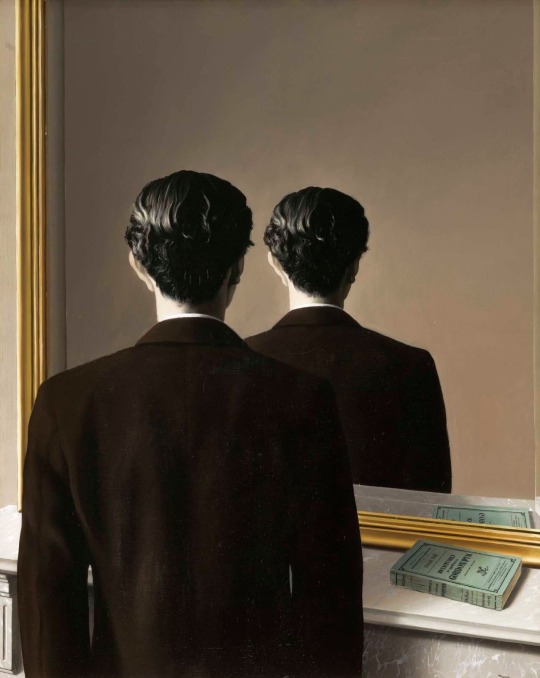
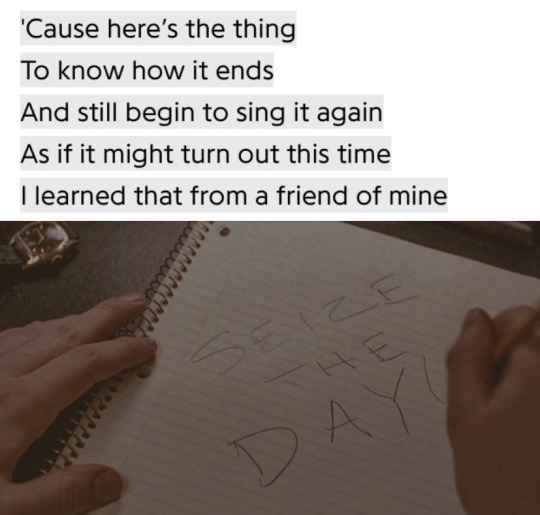
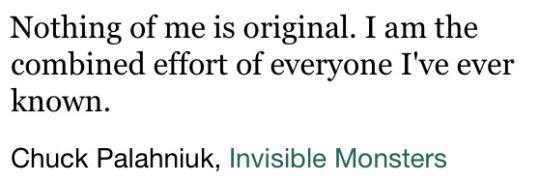

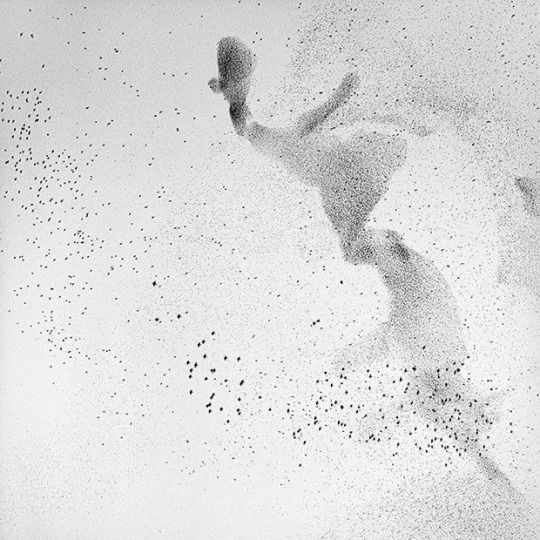
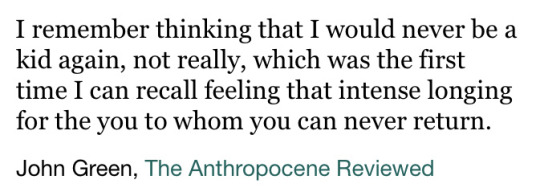


#collection of things basically#gotta love humans sometimes#trc#ronan lynch#adam parrish#the raven cycle#blue sargent#richard campbell gansey iii#pynch#the raven boys#blue lily lily blue#adam and ronan#the anthropocene reviewed#john green#chiharu shiota#hadestown#mine#ouch
319 notes
·
View notes
Text

"Unmortricken" was a lot. In fact, it might have been a little too much.
To start, I loved the glimpse of what exists outside the Central Finite Curve. The visuals were stunning and reminded me of M.C. Escher's drawings. The Jetson-like family was a nice touch--if anything can happen, who says they can't have different animation styles? All those colorful portals make me wonder what's lurking just out of sight.
It's also funny that the space outside the Curve is full of Rick's favorite thing: crystals. If he took a trip there, he'd come back with his pockets stuffed with gemstones.
Evil Morty's reappearance gave us a decent character study. Since he wasn't the antagonist, we saw him interact with the C-137s as a regular person. Morty's a little impressed, and Rick has a grudging respect for him. Others have called Evil Morty the Rickest Morty, and I agree: similar intelligence, similar technology and similar bloodthirst.
I was glad that he left in the end because that's what his character arc is about anyway. He doesn't want to be part of anyone else's story, not even another Morty's.
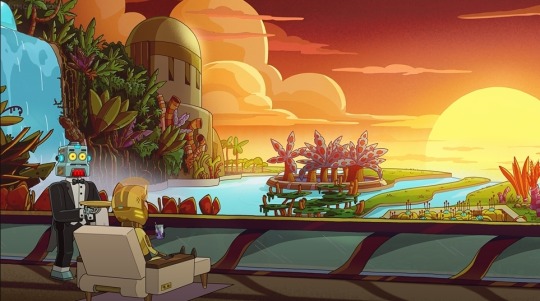
However, that's also part of the issue that I had with this episode. Seeing Evil Morty was great, but it was also a little...pointless? You could've had the same story without him. He's not working with Prime, and he has no ties to C-137 after "Rickmurai Jack," so it felt like the writers just said "Hey, you know what would be cool?"
I'm not against writers having fun and giving the audience what they want. "Spider-Man: No Way Home" (yeah, groan at me, Marvel haters) is fan service in blockbuster form, and it was one of the best theater experiences I've ever had.
Still, if Evil Morty came back, I think he should've had a separate episode. The episode juggled C-137 Rick, Morty, Evil Morty and Prime Rick pretty well, giving them satisfying interactions with each other, but no Evil Morty would've meant more relationship development for the C-137s.
Evil Morty's backstory also didn't reveal much about him. I mean--yeah, we all figured that he had an abusive Rick and got fed up. The fact that he had a "regular" Rick instead of a deranged lunatic does make a point about the banality of abuse. Monsters aren't always raving maniacs who torture people in their basements. Ordinary people can wear you down with a slow drip of toxicity and neglect.
I enjoyed this episode, and Evil Morty's return was exciting, but cramming the series' two biggest antagonists and storylines into twenty minutes was a little overwhelming. New plot developments kept showing up, too: Rick found Prime! Prime's various lairs! Omega device! I would've preferred a two-parter.
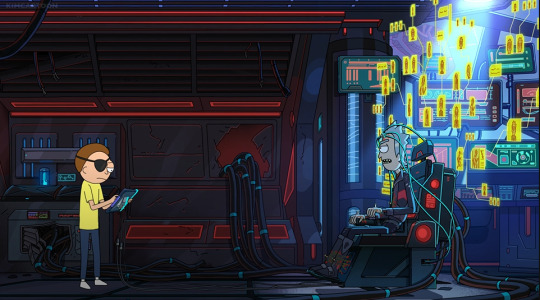
I'll admit that if you told me that we'd see Evil Morty and Rick Prime in the same shot, I never would have believed you, but here we are.
On that note, Prime's characterization was perfect. No attempt at a cutesy, sad backstory; he's a laughing monster until the end. And is it really the end? He has regeneration abilities, but C-137 acts like he's dead and even gives up the search. This leaves us with a few options:
C-137 killed him.
Prime fooled C-137 into thinking that he's dead when he isn't.
C-137's keeping him alive for later use.
Hopefully, this is more complicated than it looks because I'll be disappointed if this is the end of Prime. He's a brilliant reflection of C-137: the Rick he'd be without his tiny shred of humanity.
And Prime's a maniac, but he tells C-137 the truth. Rick broke into Prime's house. He pretended he belonged with this group of strangers. He latched on to Prime's grandson because he never had his own. His brutal, violent streak never went away no matter how long he tried to play house.
Prime says "Admit it! You would have been me!" In season three and parts of season four, Rick was close. His love for his family--love that he pretended he didn't have--and desire for their approval just barely pulled him back. But what kept that spark alive? How close was he to becoming a cold, unfeeling shell?
In the end, C-137's not satisfied after he destroys Prime--and weirdly, I'm not satisfied, either. Beating Prime to an unrecognizable pulp doesn't bring Rick's original family back. It doesn't erase the atrocities that Rick's committed. It doesn't make his grief go away. It doesn't change the fact that Rick teetered on the edge of turning into the monster that he despised.
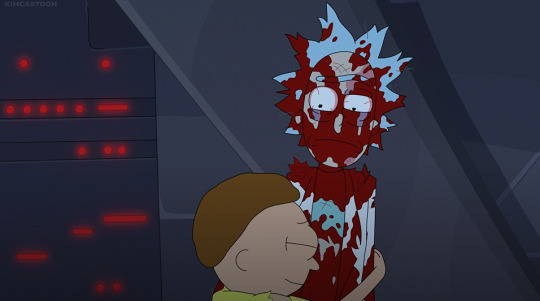
What's more satisfying is that Rick didn't turn out like Prime. His Morty doesn't give two shits about Prime, but he loves him. He hugs him in relief (come on, Rick, hug him back already!), cries out "Rick? Rick!" and shakes his body when he thinks he's dead, and talks excitedly as they return home.
Rick's going to therapy, which Prime would have mocked. He went from having nobody to living with FIVE kids if you count Morty and Summer. Even he and his Jerry are pretty tight.
Rick knows this, but he still feels empty all the time. Vengeance doesn't work, drinking doesn't work...wouldn't it be easier if he just switched off his humanity and laughed at everything, even his own death?
But now that he knows how it feels to be loved, especially by his hypothetical grandson, I think he'll always find himself at the Smiths' doorstep.
#rick and morty#rick sanchez#morty smith#prime rick#weird rick#rick prime#evil morty#boy that's quite the collection of tags#unmortricken#season seven#review
508 notes
·
View notes
Text

MC is such a mood
#ikesen#ikemen sengoku#ikesen mitsuhide#mitsuhide akechi#collection event#i laughed so hard at this#mc brought out the caps lock#also yes i got both parts of this bonus story#review incoming!
32 notes
·
View notes
Text




The Japan first edition blu-ray is here! \(^o^)/
The digital content is the same save for an additional Japanese dub, so I'm way more curious about the trinkets!
2nd pic is a set of six postcards that iirc are DVD volume covers. (Wow remember the early days of TCW where there's ZERO Ahsoka on any promo materials) Each cover features screencaps of the episodes it contains.
3rd pic is keychain charms. 4th pic is a poster by… I think, Kilian Plunkett? It looks a little too finished to be Filoni… Enlighten me if you do.
#the clone wars#star wars#tcw reviews#now I only have the lost missions and I'll have a complete collection#unfortunately S6 doesn't include any bts bonus so I keep forget it :p
71 notes
·
View notes
Text

I’m sure this has been pointed out before, but the newer G3 Frankies are more of a blue color than a mint color?? Is it with everyone’s or just certain lines? Maybe where they are being manufactured at?? Just thought it was interesting.
I was looking at my G3 Draculaura, and it looks like her pink skin has gotten much brighter on some of her newer dolls too.

I couldn’t help myself and dug out a couple of my Clawdeens to compare their skin tones too.

Yeah, the one on the left is the teensiest bit paler (you can also see the difference between the shorter and longer necks used as well).
And finally, I wanted to take a look at some of my Cleos.

Skulltimate Secrets and Buried Secrets have a much more reddish tone to their body compared to the budget core Cleo. I was also surprised that the poly hair was a different shade between Skulltimate and Buried Secrets.
#Monster high#doll collecting#G3 Frankie Stein#monster high g3#aleta’s toys#G3 Draculaura#G3 clawdeen#g3 cleo#doll review
41 notes
·
View notes
Text
hey some very smart people (my babes @captainrayzizuniverse and @goldcrumble) have cracked a 28 Clothing pattern check this out: Drop 1 and Drop 2 came out August and November last year and were both Collection 01 (labeled on the clothing tags); Drop 3 (this July) is Collection 02...


...which suggests a possible pattern of one collection consisting of two drops close together late in the year per year, which feels consistent with teasing items from the next drop in the promo for this recent one; so we would see Drop 4- the second half of Collection 02- in October or November, and then another long wait until the second half of next year for more?
#doing SCIENCE here the if thens are iffing and thenning!!#submitting for peer review lol#taking louie mathing to the word problem area#28op#28 clothing#also this makes sense with why you could still buy drop 1 items along with drop 2 until just now#collection one all together#now collection 2 only#so we could expect drop 3 stuff thats left to stay up after drop 4 for a while#the first two were so close together!!!! its no wonder we were confused by the long wait after#literally why are they so allergic to just telling us things there's NO REASON not to simply share this info😂#I mean I enjoy a puzzle I guess but COME ON WHY
123 notes
·
View notes
Text
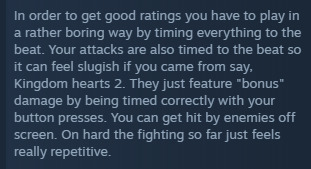
This negative review for Hi-Fi Rush is fucking sending me like--
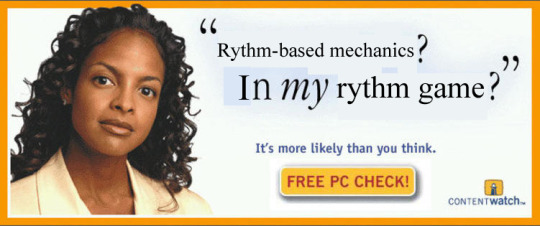
Bro, what did you expect???
#Hi-Fi Rush#Hi Fi Rush#this has the exact same vibe of people leaving negative reviews for Hollow Knight like#''UGH you have to run around the whole map to collect power ups because some areas are locked until you get said power ups#there's just so much backtracking'' Um- yes? you just described a metroidvania? which is what Hollow Knight is?#are haters okay
493 notes
·
View notes
Text

I have seen barely anyone talking about these Disney Princess BJDs, which is odd to me since I figured they'd be hugely popular. I got mine on AliExpress.
I'm a fairly new doll collector but I also collect Princess Aurora figures and merchandise, so I might be biased, but I love her!
She's my first BJD, and it was a learning curve for sure. Her skirt admittedly isn't great quality (it almost feels like surgical glove material) and her stand was terrible (it held her leg at the joint, which was a nightmare) but I swapped it out for one of my anime figure stands and it works much better. She also has a heavier head so she can tip pretty easily, but where I'm gonna display her it's not going to be an issue since she'll be propped up. Her crown doesn't sit on her head great, but some putty will hold it on nice enough. She cost me about £18.
Overall though I love her, and I'm very happy! She's so stunning and I'm super excited to add her to my Aurora display ❤️
#disney princess bjd#disney princess#princess aurora#ball jointed doll#beginner doll collector#adult doll collector#doll collection#doll review#personal#i'm gonna repurpose the base of her stand for one of my other aurora ornaments since it has a nice grecian look to it#also you can reposition her eyes which i think is standard for bjds???
30 notes
·
View notes
Text









There are so many moments in Dead Dead Demon's Destruction that are just so pointed and devastating but this one really hits man. I'm kind of wondering if it was written after the Logan Paul thing happened, though of course it's probably referencing a lot of things related to a general American attitude that is, uh, timeless.
#also they got someone really fluent in English for this part so i got to hear someone say 'what the fUCK' out of nowhere#the closed captions skip a lot of the swearing they're doing it's like fuck every other word#using my limited time at a coworking space that has internet my mom's neighbors invited me to collecting anime screenshots for reviews#my priorities are great#it's just as hard on the Japanese government but every time it goes after America I'm like yeah you're so right we suck#dead dead demon's dededededestruction#dead demon's destruction
57 notes
·
View notes
Text
i forget there interests I don’t really talk about to other people or keep to a minimum bc I know they’re not the most conventional but I have a huge special interest in crayola art supplies/and collecting and I have almost every recent release of specialty crayon and I get so excited when they release new ones . I got so excited recently bc they just released swirl crayons ( I think they’re a revival from a 90s version) but I’m literally so fucking excited you don’t get it. you don’t even know. Sorry I wanted to ramble. Hark! to my completely unrelated tumblr blog I go!☝🏽
#there’s this woman I watch on YouTube#she swatched and reviews all kinds of art supplies#and she does crayola ones often!!#she has to be in her mid/late 50s bc she talks abt the ones she had when she was younger#and she would but them for her kids too!!! she collects a bunch now too!!!#I’m watchybf a video of her swatching all the retired crayon shades… autism heaven ….#Jenny’s crayon collection my beloved <3#Maybe I need to make a side blog for this or something bc I know a lot of ppl aren’t interested#but I want to Yao sometimes sorry 💔💔💔#txt#*yap
105 notes
·
View notes
Text

my dresser set up 🦢
#perfume samples#perfume#fragrancetwt#fragrance tumblr#fragrance#orion carloto#mirror palais#mexicanfaerie#doilies#perfume posting#perfume aesthetic#perfume collection#perfume notes#perfume recommendations#fragrance posting#fragrance review#aesthetic#instagram story#light aesthetic#light moodboard#moodboard#inspo#cottagecore#cottage aesthetic#pierrot#coquette#lana del rey
60 notes
·
View notes